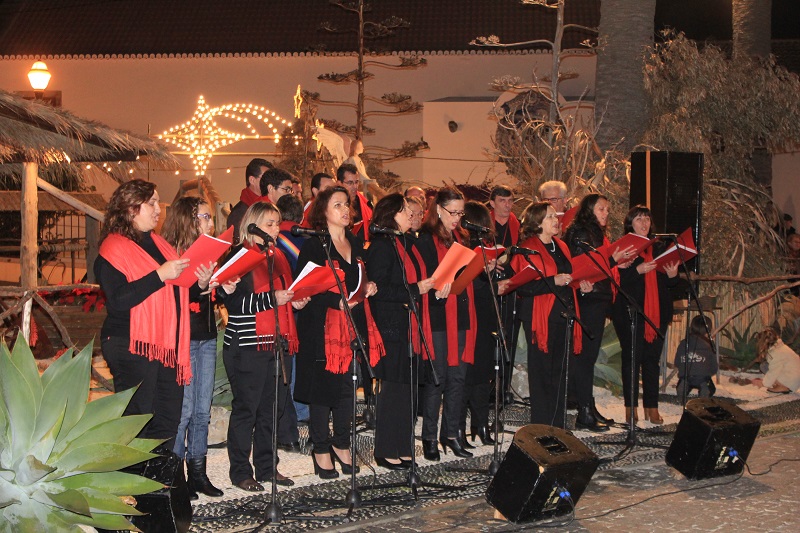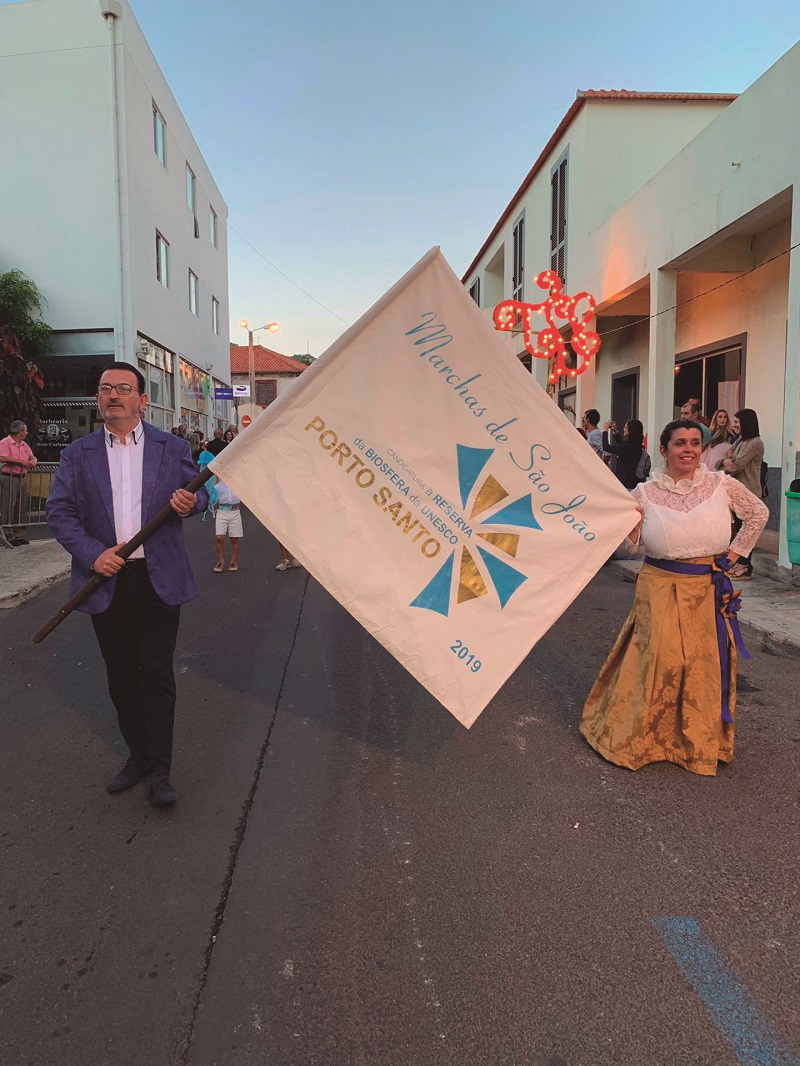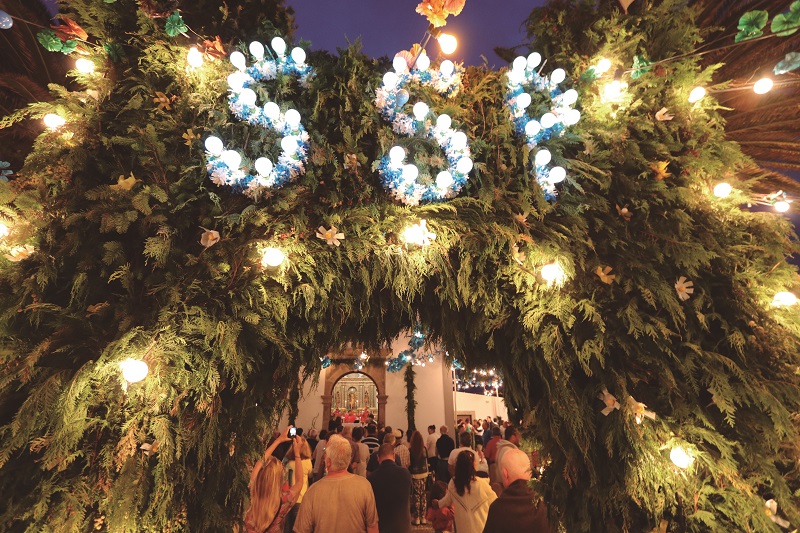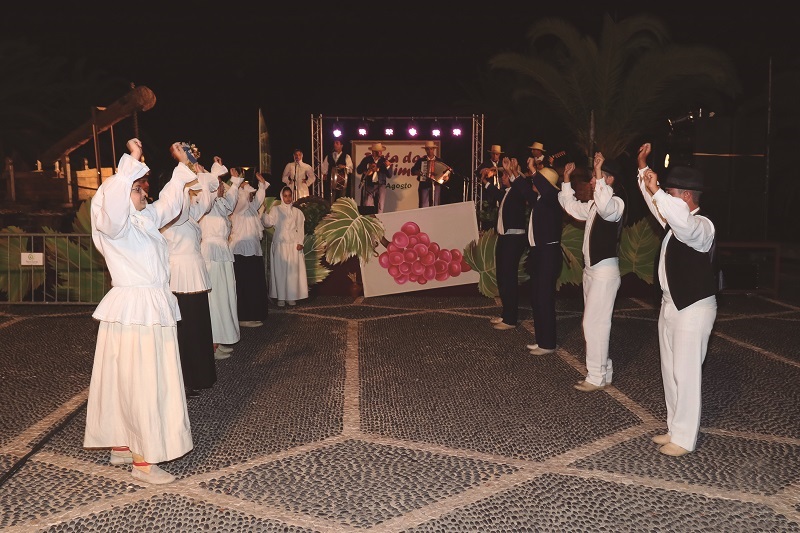Most island festivities have remained the same throughout the years, each one with its idiosyncrasies and role in motivating the population and cultivating the sociocultural identity of Porto Santo, which is in need of new approaches in the face of the challenges and stimuli of the new times.
On the Twelfth Night, the fifth of January, the population gathers in the city centre, where the municipality brings together different groups to sing Christmas Carols. Throughout the night, these and other groups of people go through the streets of the island, door to door, singing Christmas Carols, enjoying the nativity and tasting Christmas delicacies.
On the night of fourteenth of January, the voices and the instruments once again take to the streets and visit friends and family for the traditional “sweeping of the wardrobes”, finishing off the Christmas sweets in the houses visited.
On the day of Saint Amaro, 15th January, the students in pre-school and in the 1st cycle at school as well as groups of senior citizens (Day Centre of the Foundation of Our Lady of Piety, Senior Citizen University of Porto Santo and Espírito Santo Cultural and Recreational Association) take their brooms and sing songs allusive to the festivities, in the city.
Two weeks before Easter the word “Balamento!” can be heard, breaking the silence. They are exclamations of children and adults in an ancient game that has been passed down from parents to children. The participants agree on whether it will be the sound of the church bell or the moment when the public lighting goes on, or whatever other phenomenon with a fixed timetable, that will make the participants shout out “Balamento!”. The first participant to say the magic word receives a point and at Easter the player with the most points is the winner and receives the “Balamento!”, which has initially been agreed upon, and can be sweets, chocolates, eggs or the traditional almonds allusive to the ceremony.
During the Easter celebration, the interweaved fresh palm hearts are used in the Palm Sunday Procession. After the blessing, the palm hearts are carried in the procession and are then kept at home and used daily as symbols to receive “divine protection”, because after they are “blessed” they can be used to keep away evil and calm adversities. Displayed on the walls or in household oratories, next to the chosen saints of family devotion, the branches dry up and lose their original colour, but even so are kept until the following year for spiritual protection.
After the traditional ceremonies have taken place, the Easter Sunday visit is replaced by the visit of the Holy Spirit to the different places on the island on the following Sundays, taking the “joy of the Resurrected Christ” to every family. The girls that accompany the group are called “saloias” (country girls), and in each house they sing a typical song and carry a small basket to collect sweets, eggs or other objects according to the tradition. After all the places have been visited, they go the beach and this ends the cycle of Easter festivities.
“Come down to Earth, Blessed Light´
come uplift your people
visit our souls
guide our steps
Upon entering this church
we fervently ask
the Divine Holy Spirit
to fill us with your love
Our Lady who is inside
dressed in blue and white
waiting for the visit
of the Divine Holy Spirit
Divine Holy Spirit
eternal in your pain
bless our souls
and keep them in your love”
Included in the Festivals of the County, the festivals of Saint John, patron saint of the island are the most anticipated. For five months, each march is thought out in detail, from the lyrics and music of the march, the attire, choreography and floats. When night arrives, the streets fill with a different shine and joy, and the marches end around the great fire, quayside, followed by nocturnal entertainment and food and drinks until sunrise. The Municipal day, 24th June is celebrated with pomp and circumstance, culminating in the festivities that bring many visitors to the island, who specifically search out this period in order to participate in this festive scenario which is characteristic of Porto Santo.
The devotion to Saint Peter, patron saint of farmers and fishermen, is also longstanding. Farmers would ask for rain and the fishermen for an abundance of fish. Every year, on the 28th June there is a procession organised by the brotherhood of Saint Peter, from the Ribeiro Salgado beach to the Chapel of Saint Peter, where the mass is held. At the end, there is the traditional fish auction, offered by the fishermen and one of the highlights of the festival.
It is worthy to note that in the past, the single girls played “Sortes” (Luck), at around the time of the festivals of the saints, to see who they would marry. The “sorte” of the snail consisted in getting a dark cloth and placing a snail on it and then a medium sized box over the snail and the cloth. The girl would then ask the match-maker saint to reveal the name of the boy she was going to marry. The following morning, the path outlined by the snail would reveal the initial of her future husband.
In July, the city is filled with music, and the big little talents hit the streets. Organised by the Parish Council of Porto Santo, the “Festival Infantil de Vozes” (Children’s Festival of Voices) of Porto Santo presents the selected students of the different 1st cycle schools and their music, accompanied by the Children’s choir of the Parish Council.
The Gastronomy Festival, organised since July 2015 presents a series of delicacies, some traditional and others more modern, local or regional, giving the people a special reason to take to the streets.
With the creation of the parishes of Our Lady of Piety and the Holy Spirit, two brotherhoods of the Holy Sacrament were established, and the festivals in their honour are celebrated on the second last weekend in July in the chapel of the Holy Spirit and in the first weekend of September in the church of Our Lady of Piety.
In the last weekend of July, the festival of the Holy Spirit celebrates the blessing of the bread, with the flag of the Holy Spirit, which is then distributed to the people, in the respective chapel.
Between the 14th and 16th of August the festival of Our Lady of Grace, gathers hundreds of followers and visitors. It is known that the chapel of Our Lady of Grace was in ruins between the years of 1813 and 1949. In 1949, the population decided to rebuild it by getting the necessary materials in the Serra de Fora, as well as the festivals and pilgrimages to help in the reconstruction. Nowadays, the number of parishioners who are part of the brotherhood of Our Lady of Grace is still significant. Many of the songs still sung today during the pilgrimages, began during this phase of the history of the chapel of Our Lady of Grace.
In the last days of August, the festival of the Grape Harvest takes place. Here one can get acquainted with the variety of vineyards, grown on the island, contributing to the opportunity for the harvest in the “Parque Experimental Agrícola” (Experimental Agricultural Park) of Farrobo and the stomping of grapes in a public winepress set up in the centre of the city, providing moments of fun and musical entertainment.
Another important event in August is the “Encontro de Folklore” Folklore Gathering, counting sixteen editions so far. The local folklore group hosts the event which entertains the island and promotes the local culture of the country.
In 1952, foreseeing a year of drought, the people, in pilgrimage and in faith, pleaded with Our Lady of Grace in song, for the fields to stop being dry. This prayer was subsequently answered with the arrival of the much desired rain.
“Our Lady of Grace,
is our mediator
So here we carry her,
present on this salver.
Do not show disdain of the little church
that you see lost from up above,
Because that church is
my faith, my life.”
The festival in honour of Our Lady of Piety, patron saint of the Island of Porto Santo, since primitive times, is celebrated on the last weekend in August and relies on the commitment of the respective brotherhood. The Centre of the city is decorated with colourful flags which are placed on wooden poles decorated with vegetation. After the religious festivities there is food and drink and a lot of entertainment.
During the second half of September, the island goes back in time to the arrival of Christopher Columbus in Porto Santo. Besides the music and street entertainment allusive to the time period, the disembarking of the navigator and his crew can be witnessed, followed by a historical parade and the growing participation of the people. The Columbus Festival, has increasingly been gathering touristic importance.
The official discovery day of Porto Santo is celebrated every year on the 1st November, leading to the traditional ceremonies, recalling the arrival of Gonçalves Zarco and Tristão Vaz Teixeira to the island in 1418.






